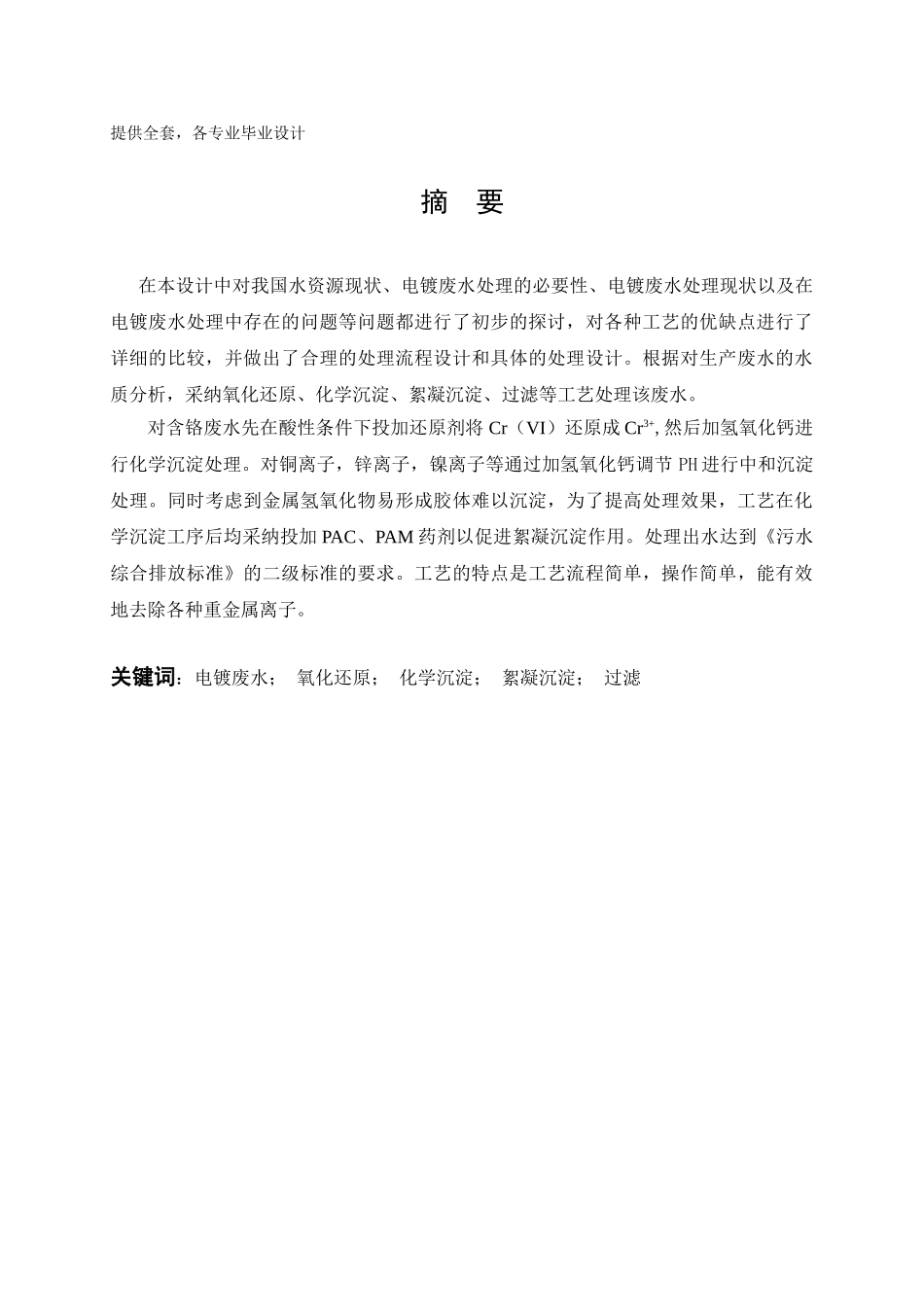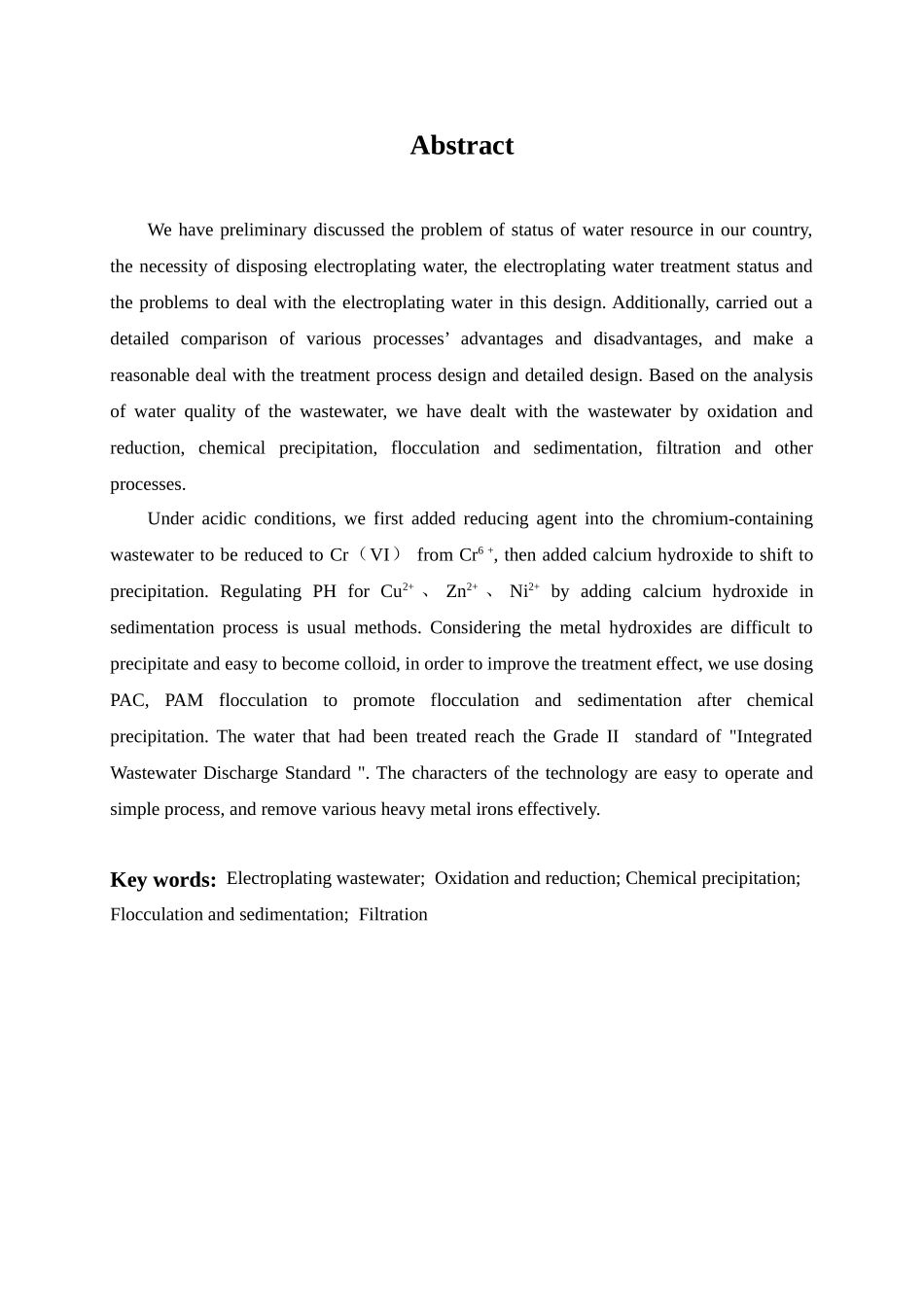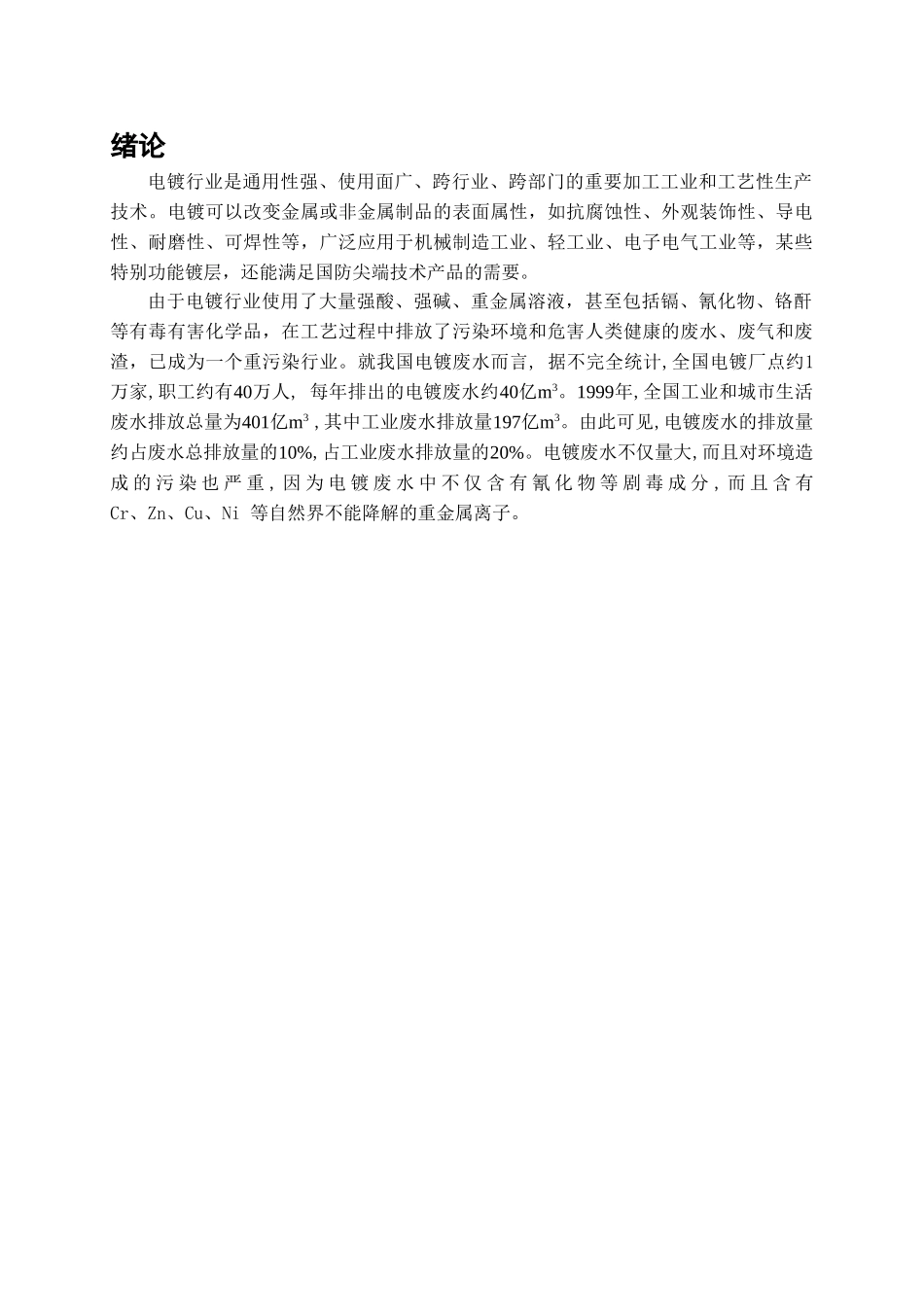提供全套,各专业毕业设计摘 要在本设计中对我国水资源现状、电镀废水处理的必要性、电镀废水处理现状以及在电镀废水处理中存在的问题等问题都进行了初步的探讨,对各种工艺的优缺点进行了详细的比较,并做出了合理的处理流程设计和具体的处理设计。根据对生产废水的水质分析,采纳氧化还原、化学沉淀、絮凝沉淀、过滤等工艺处理该废水。对含铬废水先在酸性条件下投加还原剂将 Cr(VI)还原成 Cr3+,然后加氢氧化钙进行化学沉淀处理。对铜离子,锌离子,镍离子等通过加氢氧化钙调节 PH 进行中和沉淀处理。同时考虑到金属氢氧化物易形成胶体难以沉淀,为了提高处理效果,工艺在化学沉淀工序后均采纳投加 PAC、PAM 药剂以促进絮凝沉淀作用。处理出水达到《污水综合排放标准》的二级标准的要求。工艺的特点是工艺流程简单,操作简单,能有效地去除各种重金属离子。关键词:电镀废水; 氧化还原; 化学沉淀; 絮凝沉淀; 过滤AbstractWe have preliminary discussed the problem of status of water resource in our country, the necessity of disposing electroplating water, the electroplating water treatment status and the problems to deal with the electroplating water in this design. Additionally, carried out a detailed comparison of various processes’ advantages and disadvantages, and make a reasonable deal with the treatment process design and detailed design. Based on the analysis of water quality of the wastewater, we have dealt with the wastewater by oxidation and reduction, chemical precipitation, flocculation and sedimentation, filtration and other processes. Under acidic conditions, we first added reducing agent into the chromium-containing wastewater to be reduced to Cr(VI) from Cr6 +, then added calcium hydroxide to shift to precipitation. Regulating PH for Cu2+ 、 Zn2+ 、 Ni2+ by adding calcium hydroxide in sedimentation process is usual methods. Considering the metal hydroxides are difficult to precipitate and easy to become colloid, in order to improve the treatment...


